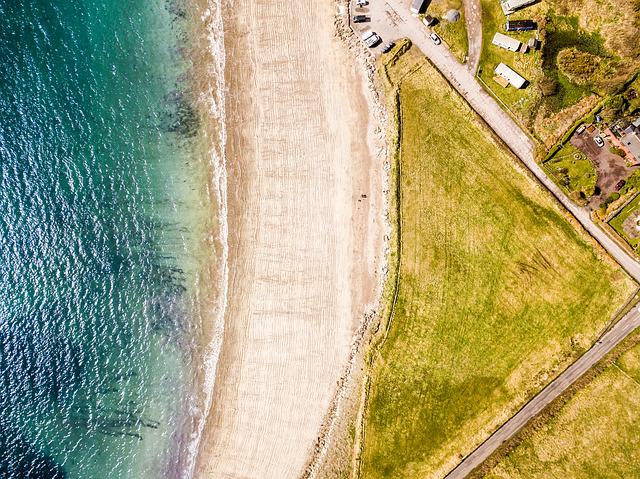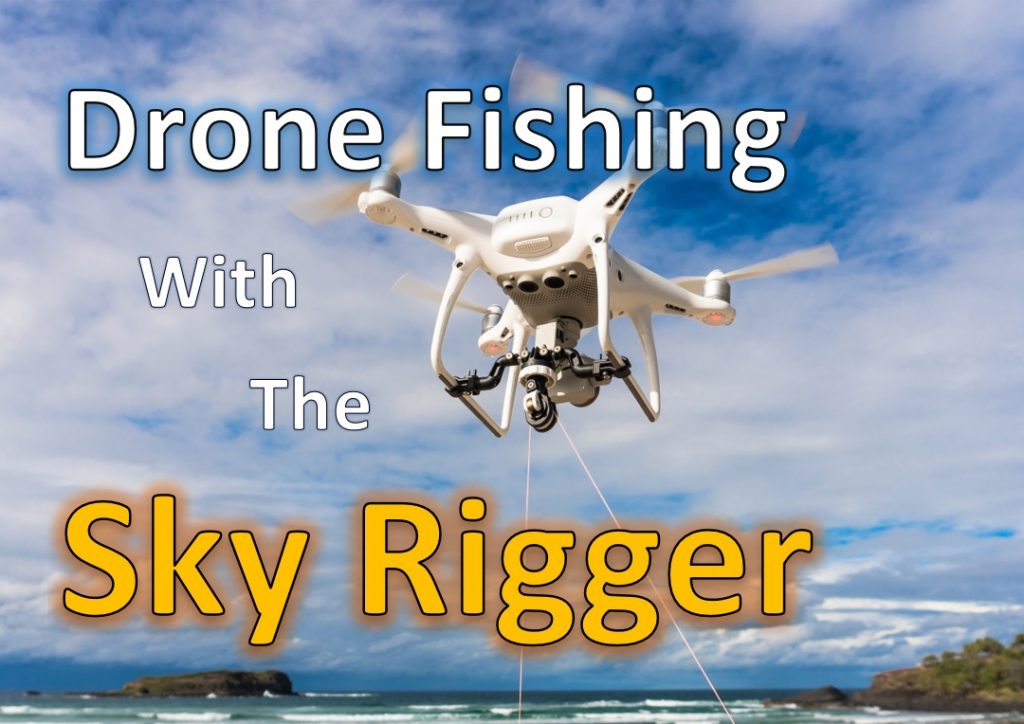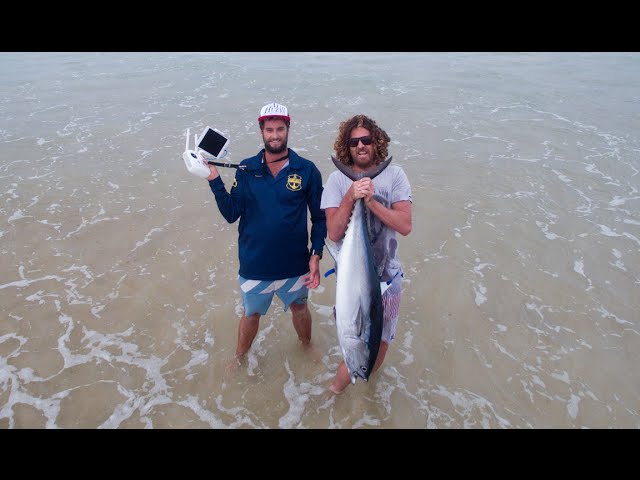
A drone can be used to view the water around your property if you're a keen fisherman living in Australia. A drone can have many features such as an angle adjustable camera and GPS positioning system. You can also purchase fishing lines, which are stable and safe. One example is SKY RIGGER drone.
SKY RIGGER, a drone fishing line, is available
The SKY RIGGER flexible fishing line system allows you to fish from the sky with minimum effort. Two rotating leg clamps can be mounted to any drone model. The release mechanism features a bayonet-style connection, and a cam lock arm that allows you to quickly open the line clamps. Sky RIGGER doesn't require batteries unlike other drones. This drone can take all kinds of fishing techniques and is safe.
The SKY RIGGER comes with an automatic release mechanism that allows you to let go of the line when a fish catches your fly. You can also manually let go of the line by using your rod or hand. This feature can be found on all models. It is highly recommended that you buy a Phantom 3 before buying the new SKY RIGGER. A few pros and cons of the new line system:
It comes with a mechanical payload.
One of the most important features of a good drone is its mechanical payload release. Many of them are designed to allow the angler to release the fishing line with ease. Some models lack a release mechanism. Instead, to remove the drone from its fishing line, the user must "yank” it. This can be an inconvenient process, especially for people who aren't comfortable using their hands to release the line.

Its payload release function is another important feature. When a fish strikes, the payload must be able release the line from the drone. Before you try this method, it is important that you practice catch-and-release fishing. The fish cannot be pulled to shore and then released back into the water. Many people have had good experiences with the DJI Phantom drone. However, this technology is not yet comparable to other fishing drones.
It comes with a GPS location system
Rippton, an Australian and Dutch joint venture, specializes in technology-oriented fish products. Its goal is improve anglers' success by creating products that enhance the fishing experience. Rippton’s Mobula drone comes with a GPS position system and remote release. The Mobula is able to hold bait on the surface, resist kite clips and is environmentally friendly.
It is light at 3 pounds and can take off for 18 minutes. It has a high tech GPS system that can be controlled from as far as 2,000 meters away. The range is 1000 meters or half a miles. Intelligent flight modes are also available. Its point-of-interest feature allows it to capture high quality images of its surroundings. The camera's high resolution allows for great views of fish.
It comes with a failsafe feature
The Aerokontiki fisherman drone comes with a failsafe feature: it monitors the battery level and releases the fishing line when needed. It will return to dry ground if it experiences a battery failure and continue its mission. It can be operated anywhere with its industrial-grade flight control system. The drone can be used in even the most challenging water spots, and is waterproof.

FAQ
Is it a crime to fly drones?
Yes, it is illegal to fly drones in some countries like Australia, Canada and New Zealand. It is legal in some other countries, such as France and Italy, the Netherlands, Poland, Russia or Switzerland, Turkey, Ukraine, and Vietnam.
Can my drone be flown around my neighbourhood?
Yes! These are known as UAVs (unmanned air vehicles). There are many kinds of drones today. They range from small quadcopters, to large fixed-wing planes. The FAA recently published new rules on commercial UAV usage, which allows you to legally fly them for commercial purposes. But, it is important to note that UAVs being flown near airports can interfere with air traffic control systems. Before you operate one, you need permission from local authorities.
What is the law regarding drones flying over private property
New rules have been issued by the FAA for commercial drone flying. These rules only apply to UAVs less than 55 lbs and lower than 400 feet above the ground. Commercial operators must register with FAA to receive a license. They also need permission from local authorities when operating near airports or other restricted areas.
What type of batteries can a drone use to charge its batteries?
The majority of drones run on lithium-ion batteries. A typical drone uses between 3 and 6 volts.
Traveling with a Drone?
Drones are becoming increasingly popular for both personal use and commercial purposes. They are used for photography, filming, aerial mapping, search & rescue, and other applications. The FAA has recently approved several new drone regulations, which include requirements for registration, licensing, pilot training, and insurance. These changes will ensure that drones continue to be safe for all.
You can fly a drone as high as you like without a license.
The FAA does not limit the height of a drone. However, they do require you to register your unmanned aircraft system (UAS), which includes the registration number, model name, weight, size, serial number, manufacturer's name, date manufactured, and other information.
Can my drone be flown in my local park?
Yes, you can fly drones in parks throughout the world. However, there are some countries that prohibit drone flying in parks. See our list to see where drones can be flown legally for fun.
Statistics
- Research and Markets predict a growth rate of 51.1% over the next five years. (thedroneu.com)
- According to Indeed, a drone pilot gets paid $25.73 per hour on average in the US. (dronesgator.com)
- According to industry research from ZipRecruiter , there are 10 cities where the typical salary for a Drone Pilot job is above the national average. (dronesgator.com)
External Links
How To
How to Fly Drones at a Beginning Level
A drone is a remote-controlled aircraft used for aerial photography, cinematography, surveillance, scientific research, and hobby purposes. The technology behind drones has been around since World War II. DJI's Phantom series of quadcopters was the first to be commercially used. Since then, there have been many different types of drones available, from beginner-friendly models like the Parrot AR Drone 2.0 to professional-grade multi-rotor craft like the DJI Mavic Pro.
There are several ways to fly a drone, including;
-
Remote control - This allows you to control the drone from your hand. There are two main types of controllers: On/Off switches (like a radio) and joysticks.
-
Manual Control – This allows remote operation of the drone via GPS coordinates using a smartphone application. The app will provide instructions and help you to locate the drone.
-
Autonomous Flight - This method involves leaving the piloting duties to the drone itself. It allows the drone to fly independently without any human intervention. It must have a builtin camera, sensors capable of taking images and data to enable autonomous flight.
-
Triggered Flying - This method works in the same way as manual control. However, the pilot has to manually set up a route for the drone and it follows that route until reaching the endpoint. Once the programmed route is completed, the drone lands automatically and returns back to the base.
-
Landing Gear - Some drones come equipped with landing gear that allows them to land safely if they lose power or run out of battery during flight.
-
Goggles - Some pilots wear goggles to protect themselves from debris while operating.
-
Camera - Some drones are equipped with cameras allowing you to capture photos and videos from above.
-
Obstacles - Some drones can be equipped with obstacle avoidance systems that prevent them from crashing into obstacles.
-
Speed - Some drones can reach speeds of over 40 mph.
-
Battery Life - Most drones can last between 20 minutes to 3 hours, depending on how much power you're using.
-
Distance - Some drones can travel up 30 miles depending on the model.
-
Power source - Some drones need an external power source, while others use internal batteries.
-
Weight - Some drones have a weight of less than 1 pound and others weigh 4 lbs.
-
Size - The size of drones varies from small, easily carried devices to more substantial crafts that weigh in excess of 50 pounds.
-
Price - From high-end models that cost thousands of dollars to low-cost options that start at $100, all drones fall under a certain price category.